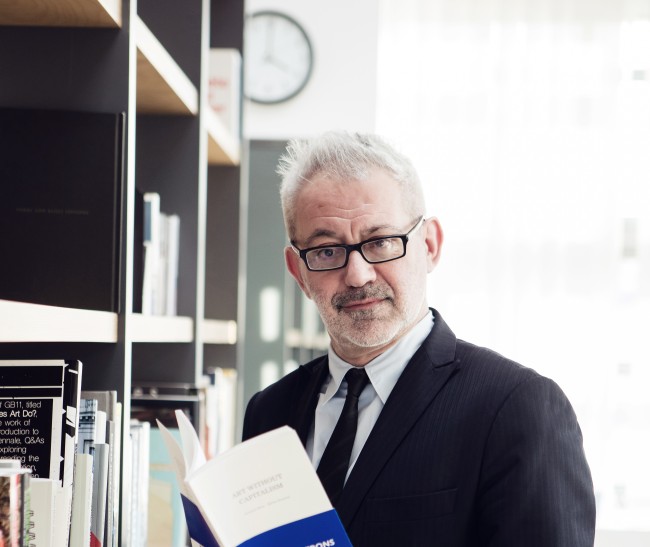[Herald Design Forum 2018] MMCA Director Bartomeu Mari talks about future of design and museum
By Im Eun-byelPublished : Aug. 28, 2018 - 16:12
The boundaries of design have changed tremendously over a short span of time. Design influences every aspect of our lives, not only the realm of products but also the way people live, says Bartomeu Mari, director of the National Museum of Modern and Contemporary Art, Korea.
“The Herald Design Forum is very good at bringing to the stage new voices. Deyan Sudjic is one of the most brilliant critics of the design-architecture field. I am honored to share the floor with all guests and learn from them.
“The Herald Design Forum is very good at bringing to the stage new voices. Deyan Sudjic is one of the most brilliant critics of the design-architecture field. I am honored to share the floor with all guests and learn from them.

“I am not a specialist in design, just a voracious witness of all innovations of our times, wherever they occur. I hope my presentation will be of interest to the audience and to such great specialists as well,” Mari said during an interview with The Korea Herald on Monday.
During the forum, the director of Korea’s largest art museum will give a speech entitled “Design as Fine Arts? Design and Museum of the Future.” The talk will center on how deeply design has penetrated our lives and how it has broken into the realm of fine arts. Mari will also address how museums should respond to the changes underway.
“It is very difficult to speak about the future of anything, especially in a moment in which the world changes so fast,” Mari said. “I have the feeling that design has increased enormously its universal affections over the last 20 or 30 years. The way we live in general has been so incredibly designed. What we call as design can no longer be reduced down to given form to objects and products,” Mari added.
As design’s influence grows, there are more issues that need to be examined, according to Mari. “The questions (concerning design now) have a lot to do with ethics not only with aesthetics. It is not only about the way things look. It is about how we exist as human beings and how we relate to each other, so I guess in the future there will be more and more of these issues that are located beyond the way in which things look and beyond the problems of efficiency and beauty,” said Mari.
Furthermore, the interaction between design and fine arts has erased boundaries between the two fields, according to Mari.
“There is a great influence between contemporary art and design, in both ways. I believe that minimal art (for instance) has affected and has had tremendous influence on design, architecture and fashion. Many buildings that surround us are unthinkable without minimal art. What is clear is that in the 20th century, design has broken the monopoly art used to have on the production of beauty,” Mari said of the dynamics between design and fine art.
He went on to say that design has posed questions to museums, which have to be open to new developments but also cautious not to become lost amid the many objects of design, as you simply cannot hoard everything.
What kind of design can museums then exhibit?
The MMCA in November will have craft works exhibited at its Deoksugung branch, in an attempt to shed light on the unique forms of design that can be found in Asian countries, particularly in Korea.
Mari says the notion of craft in the Asian region is different from the notion of design in the West. “Design solves the problem of use and tends to beauty. But in craft the notion of use is different. Craft is composed of unique objects that do have theoretically a function, but they are not necessarily used for that function. Their main function is the pleasure of visual contemplation of them, like art,” Mari said.
“Craft is integrated into what is considered as Asian art. Craft is a notion that explains the art produced in Asia. In Asia, the making of art has tremendous value, while in the West the notion of genius is not translated into the making.
“Art is translated into the concept of it. Craft has a value in the East that has a different position than in the West,” Mari said, adding that the upcoming exhibition is dedicated to making Korean art more relatable.
By Shim woo-hyun (ws@heraldcorp.com)








![[KH Explains] How should Korea adjust its trade defenses against Chinese EVs?](http://res.heraldm.com/phpwas/restmb_idxmake.php?idx=644&simg=/content/image/2024/04/15/20240415050562_0.jpg&u=20240415144419)











![[Today’s K-pop] Stray Kids to return soon: report](http://res.heraldm.com/phpwas/restmb_idxmake.php?idx=642&simg=/content/image/2024/04/16/20240416050713_0.jpg&u=)